People" Ordinary but fantastic world, interview with French illustrator Sambey and his studio

Author| Lai Jialing (writer, picture book critic, head of the "Local Cooperative Society" studio)
Editor's note: French illustrator Jean-Jacques Sempé, who has created many unforgettable characters, including the protagonists of "Little Naughty Nicolas" and "Why Marcelin Blushed" most familiar to Taiwanese readers. In the Chinese version of his biography "Childhood" published in 2017, he described the reasons for the creation of these classic works, and disclosed his childhood experiences for the first time, so that fans can understand the real life experience after the philosophical thinking of the paintings. At that time, Openbook, through the publishing house, sent out interview invitations to Sangbe many times, but due to the artist's physical discomfort, he could not make the trip. We also invited Ye Weizhong, an "iron fan" of Sanbei, to write a book review "In the stagnation on the eve of the storm, there will still be a wisp of humor: Reading Sanbei's "Childhood", and interpret Sanbei's works. At the end of March 2018, New Classic Culture Publishing House released another Sangbei work "Simple, Not Simple", which is his first collection of works, first published in 1962, republished in 2005, and finally listed in Taiwan in 2018 . It marks that he does not regard illustrations as supporting roles, and uses pictures to directly tell people the Parisians in his eyes, and uses humor to convey the life philosophy of small people. Marc Le Carpentier described the characters of Sambe this way: "He(s) don't understand the pretense and preaching of boring adults, he(s) know how to escape, and in that moment of inspiration, they escape. cruel world." In order to bring the Chinese-speaking world closer to him, New Classic Culture made a request to the French publishing house for an exclusive interview with Sangbei, and invited the picture book critic Lai Jialing to take over the role of the interviewer. Sanbei finally agreed to the invitation, so there was this rare interview and photography.
No matter how old you are when you learn to ride a bicycle, whether you have ever sneezed and sneezed in class, or have the experience of blushing when you shouldn't, if you have read Sambe's book, no matter how embarrassed you are, you will be Read the "preview", learn to be calm, not to feel lonely, and to be humorous. When I read his books when I was young, it was just like a cartoon, and I quickly read it, leaving a general impression; after all kinds of years, the pictures of the fragments floated up, but they lasted for a long time. It turned out that what was left was humor and tolerance. seed.
There are no bad people in his books, and he likes to show that small townspeople reward their lives with the power of surprise and humor; even the impetuous emotions are only temporary. Sanbei used his various named and anonymous kind-hearted characters, one by one, to consolidate a Sanmbey castle with kindness and provide a safe world for readers, big and small. He writes down the scenery of life in a seemingly loveless but affectionate way; this is his strongest and silent feedback to the real world, and he uses his whole life to remind adults who cannot treat their children kindly.

Since the book Childhood was published, many readers who grew up watching Sambe's books have realized that these sweet scenes were the result of his customization to avoid family strife. He beautified his family and friends, matched with many bystanders, wrote about the life he was looking forward to in his mind, and created a theater scene after scene. What is the impact of these humorous scenes? Readers accept his earnest admonition: We don't need to envy others at all, no matter how hard our life is, we can nourish the fragrance and create a seemingly ordinary fantasy world under the barren resources. If we start reading Sangbei's works in this mood, we can quickly accumulate a solid confidence and believe that as long as we work hard, there will be a turning point.
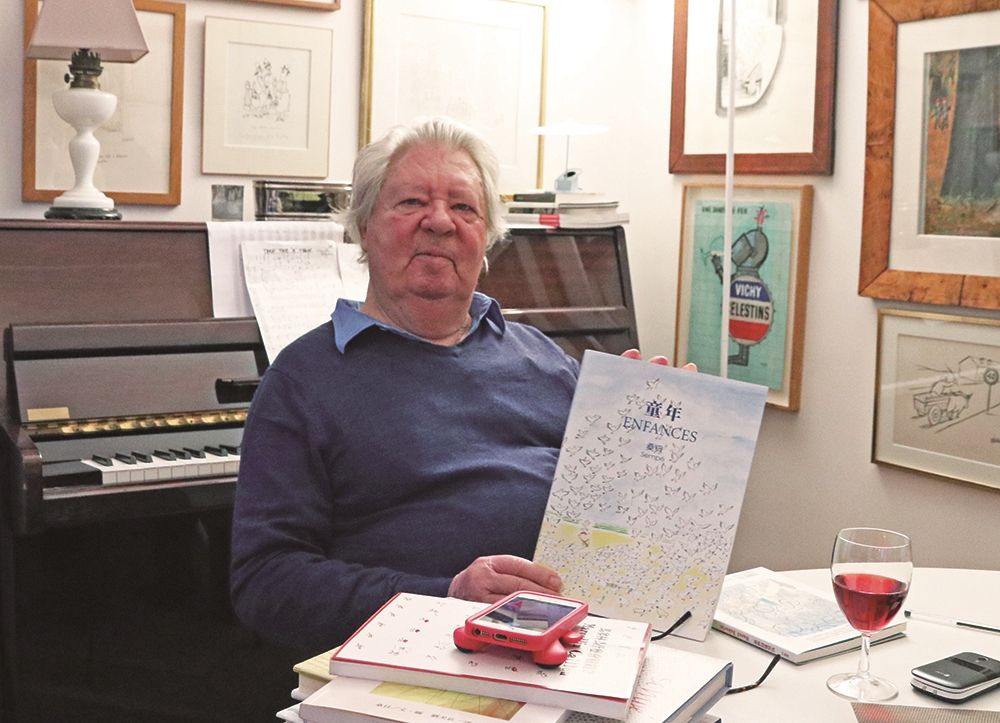
His books have their own style in bookstores in various countries and are not included in picture books. However, if all picture books and illustrators do not know this famous Sangbei, they are like refusing to be outside the circle and never enter the situation. The amazing thing is that although there are many people who like his works and want to learn a lot, very few people can learn it. By chance, in the spring of 2018, I came to Sambay’s studio on the Avenue Montparnasse in Paris; I saw the author and the interpreter visit this afternoon, like a child meeting a favorite relative and friend, from shy to happy , and even invited the next meeting when parting.
The author brought gifts prepared by the publishing house, as well as representative works in traditional Chinese that have been published in Taiwan in the past 20 years, and spread them on the table, like a catching ceremony, and asked him to pick out his favorite works. He picked up "Simple, Not Simple" without hesitation, and muttered to himself, entering his own world.


After a few minutes of silence, Sanbei apologized to everyone and said that he read the book on his own. Open our Q&A:
Q: Why this one?
A: I was too young at that time, very young. Many people say that this line of work is too tiring, so don't continue. I didn't expect that I will continue to do it for more than fifty years. When I came to Paris, I had many feelings in life.
Q: Can you give advice to young illustrators?
A: Just keep drawing. I have been drawing since I was twelve and never stopped.

Q: Who are your favorite painters?
A: Vermeer. In addition, Da Vinci and Michelangelo are my friends.
Q: What about musicians?
A: I like French composers: Ravel, Debussy, Satie. There are a few others, all from France. I also love jazz, like Duke Ellington.
Q: What are your favorite places in Paris?
A: Citi Island, Saint Germain region, Luxembourg Gardens.
Q: What is your favorite coffee shop?
A: Cafe de Flore, Les Deux Magots
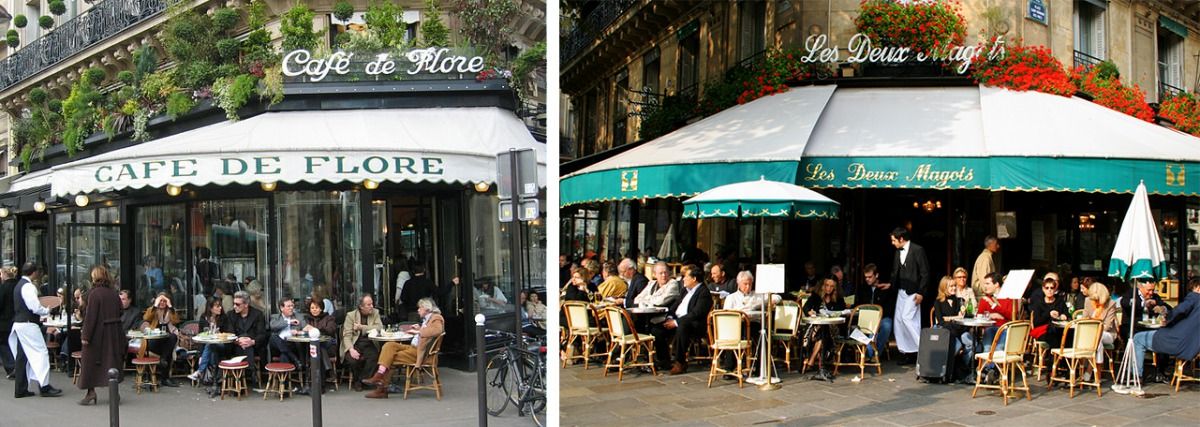
Q: Do you like watching movies?
A: Of course, but I watch it at home. Recently I watched "Beauty and the Beast", the new version! I am the same as everyone. My favorite movie is The Third Man .
Q: What about travel? Have you been to Asia?
A: I rarely travel now, I have never been to Asia, I am a little French.
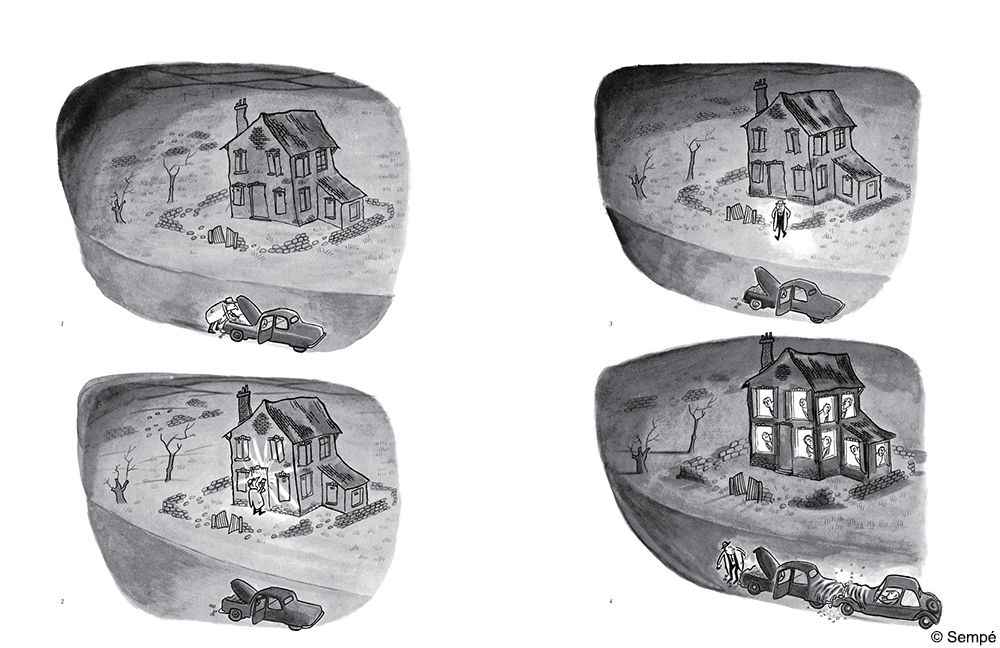


During the interview, Sangbei showed a captivating smile. He had a smile that knew everything, and coupled with his hard hearing and accent, questions and answers were often unpredictable. Because sometimes he speaks English, sometimes French, sometimes joking, thinking in leaps and bounds, we just can't keep up with his connection.
The interview location is his studio, which is on the top floor, indoors and a building within a building. The working area is a high roof, and the outdoor balcony can look out over the city of Paris, with the iron tower and the Ferris wheel standing in the middle. Here is where he has worked for more than 20 years.
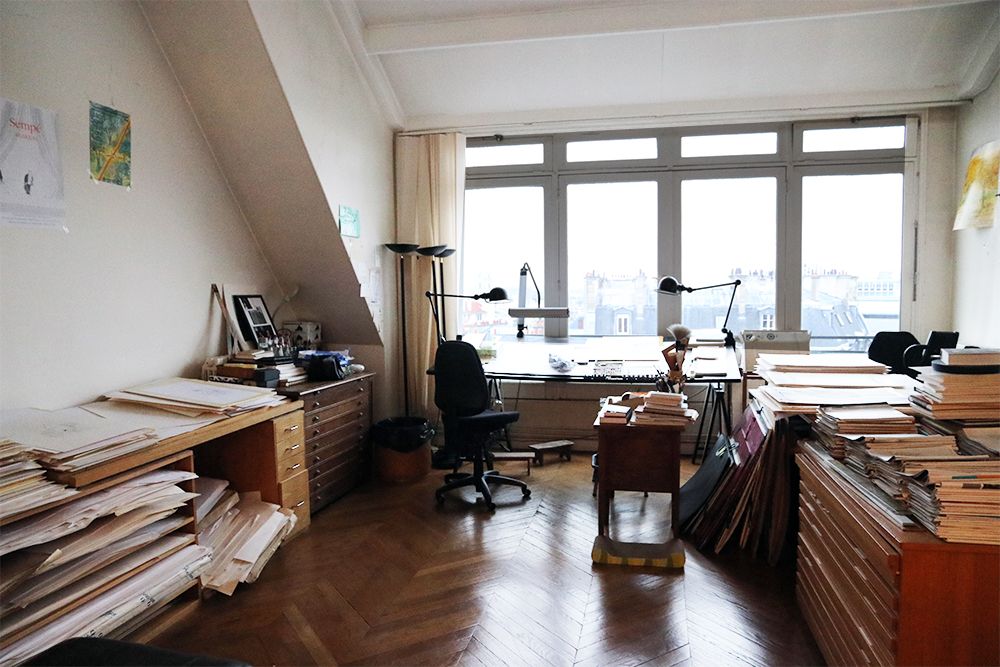
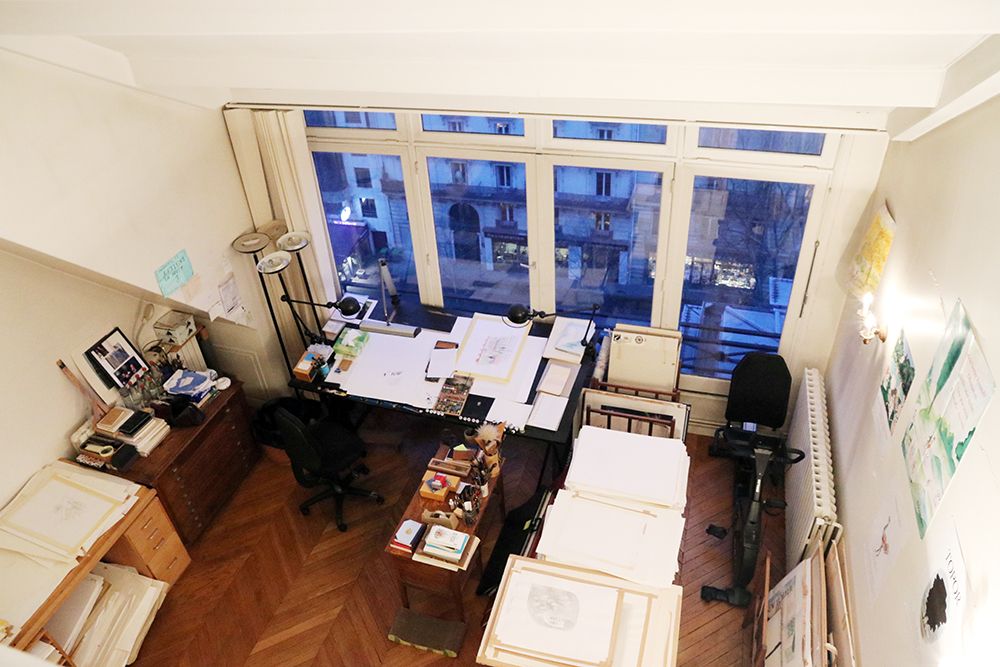
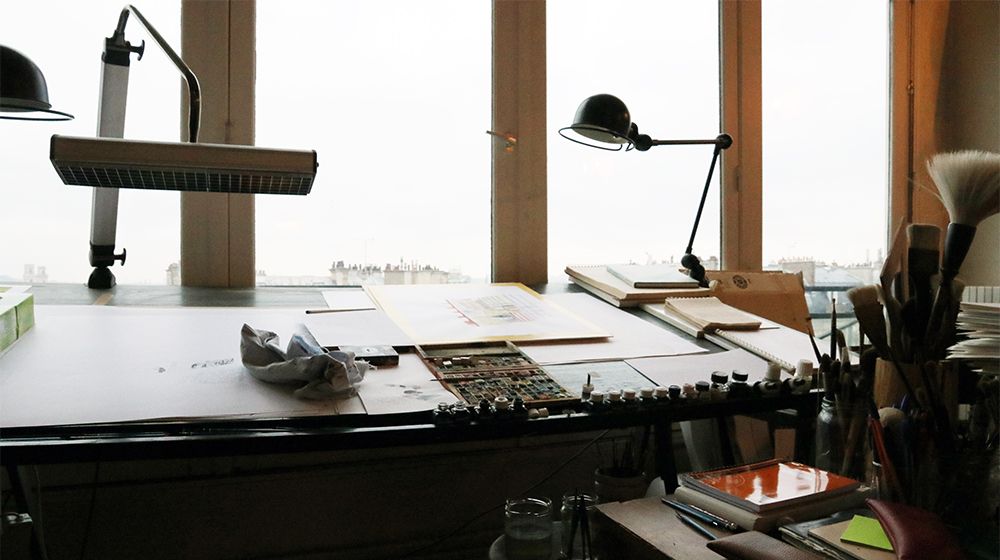
He likes to say that he is the same as everyone else, very humble and polite.
Sanbe recently raised a stray cat. He asked the cat to say hello. The cat curled up on the sofa and didn't move. He said that the cat was very tall, and it took him more than a month to pick it up. , said it was originally the Egyptian queen who was with the pharaoh. After Sanbei fought with Pharaoh, he took her to Paris by train, but unexpectedly turned into a cat. Such an imaginative story, I wonder if it will become the next book? He said it shouldn't. Now women's issues can't be talked about casually, not even young ladies and cats. It may be controversial; all the women present, all of them couldn't help laughing, and he smiled with satisfaction. . ●( The original text was first published on the OPENBOOK official website on 2018-03-30)
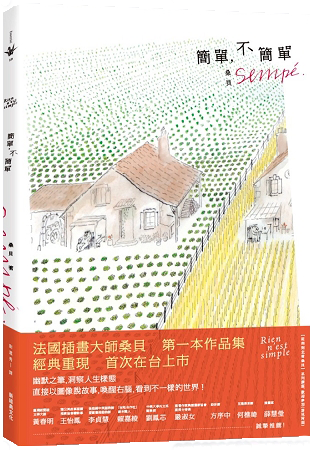
simple, not simple
Rien n'est simple
By Jean-Jacques Sempé
Translator: Yu Chixiu Publishing: New Classic Culture
About the Author:
Jean-Jacques Sempé
Born in Bordeaux in 1932. Since his creative career in the 1960s, he has published more than 40 collections. These include impressive characters such as Le Petit Nicolas (with René Goscinny), Marcellin Caillou, Raoul Taburin. The most indispensable elements of his creation are: elegant humor with a hint of metaphor and clever irony, using irony that makes people laugh, expressing the shortcomings and flaws of human nature. Currently, he is a regular illustrator with well-known magazines " L'express ", " Télérama " and "New Yorker ". He has successfully held solo exhibitions in New York, London, Munich, and Salzburg. His works have sold copyrights in Germany, the United Kingdom, the United States, Italy, China, South Korea and Russia. He is the most popular well-known cartoon/illustrator in the world. Family.
Like my work? Don't forget to support and clap, let me know that you are with me on the road of creation. Keep this enthusiasm together!

- Author
- More